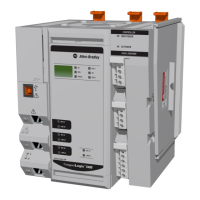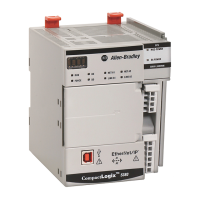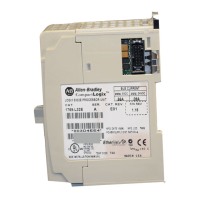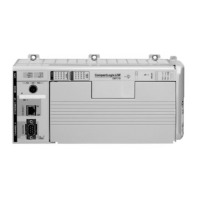152 Rockwell Automation Publication 5069-UM002A-EN-P - January 2019
Chapter 6 Connect to Different EtherNet/IP Network Levels
Controller Functionality Considerations
Remember the following controller functions when your controller is
connected to an enterprise-level network and at least one device-level network:
• The controller does not support the following functions:
– TCP routing or switching between the enterprise-level network and
a device-level network.
– CIP™ bridging of Class 0 packets between the enterprise-level
network and a device-level network.
– CIP bridging of Class 1 packets between the enterprise-level network
and a device-level network.
• The controller supports the following functions:
– CIP bridging for Class 3 CIP messages between the enterprise-level
network and a device-level network.
– CIP bridging for Unconnected CIP messages between the
enterprise-level network and a device-level network.
DNS Requests
Although you cannot configure the DNS servers or the domain name on a
device-level port, it can use DNS requests. The device-level port uses the DNS
servers and domain name from the enterprise port.
DNS Request Routing
DNS requests can be generated from any port on the controller.
DNS Request Generated From Port B1
• If the DNS server address is in the local subnet of port B1, DNS requests
leave through B1 port.
• If port A1 and/or port A2 is enabled and the DNS server address is in
the local subnet of either port, DNS requests leave through the
respective port.
For example, if port A1 is enabled and the DNS server address is in the
local subnet of port A1, DNS requests leave through port A1.
• If the DNS server address is outside of all local subnets, DNS requests
leave through B1 port toward the port B1 default gateway.

